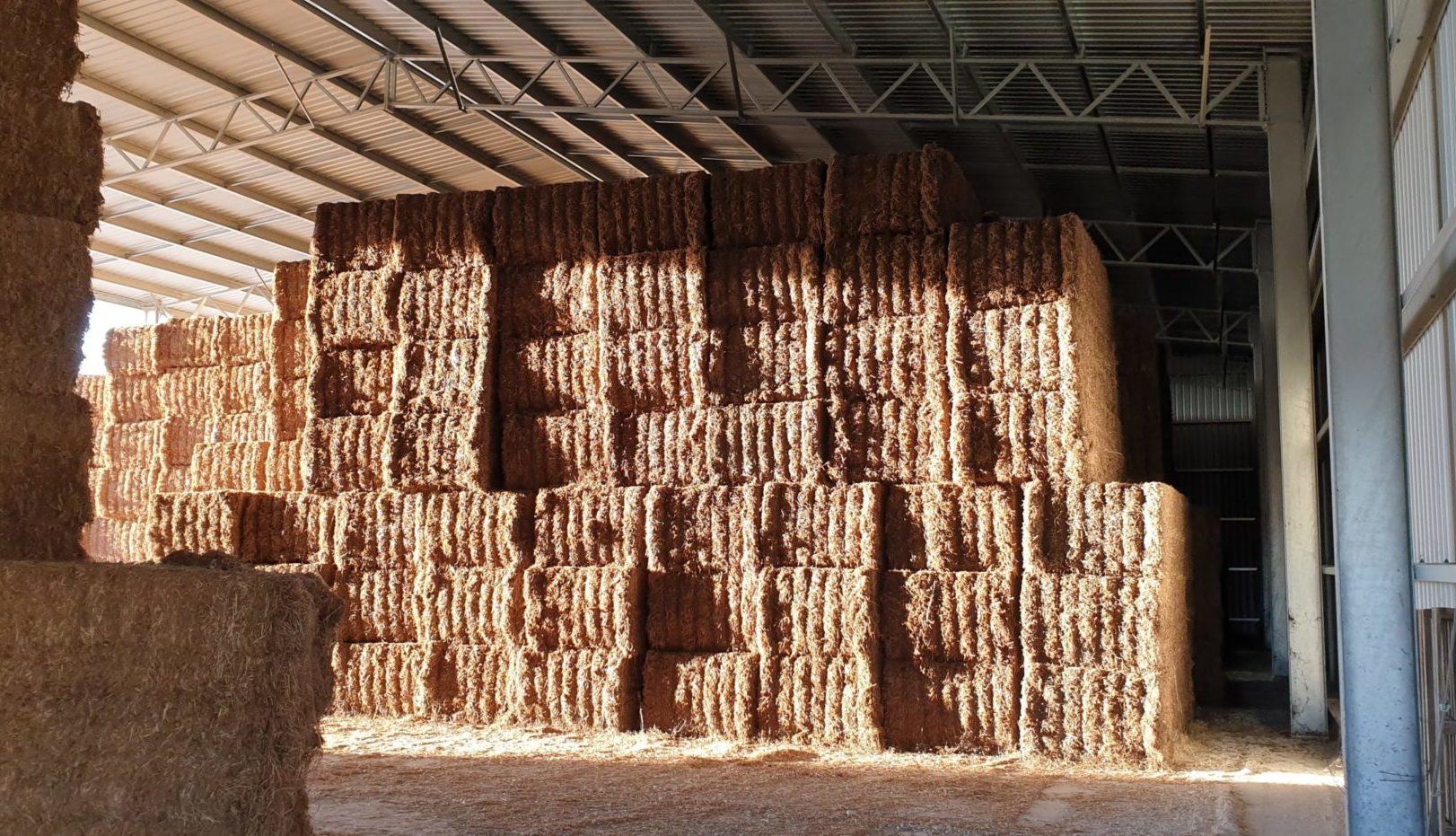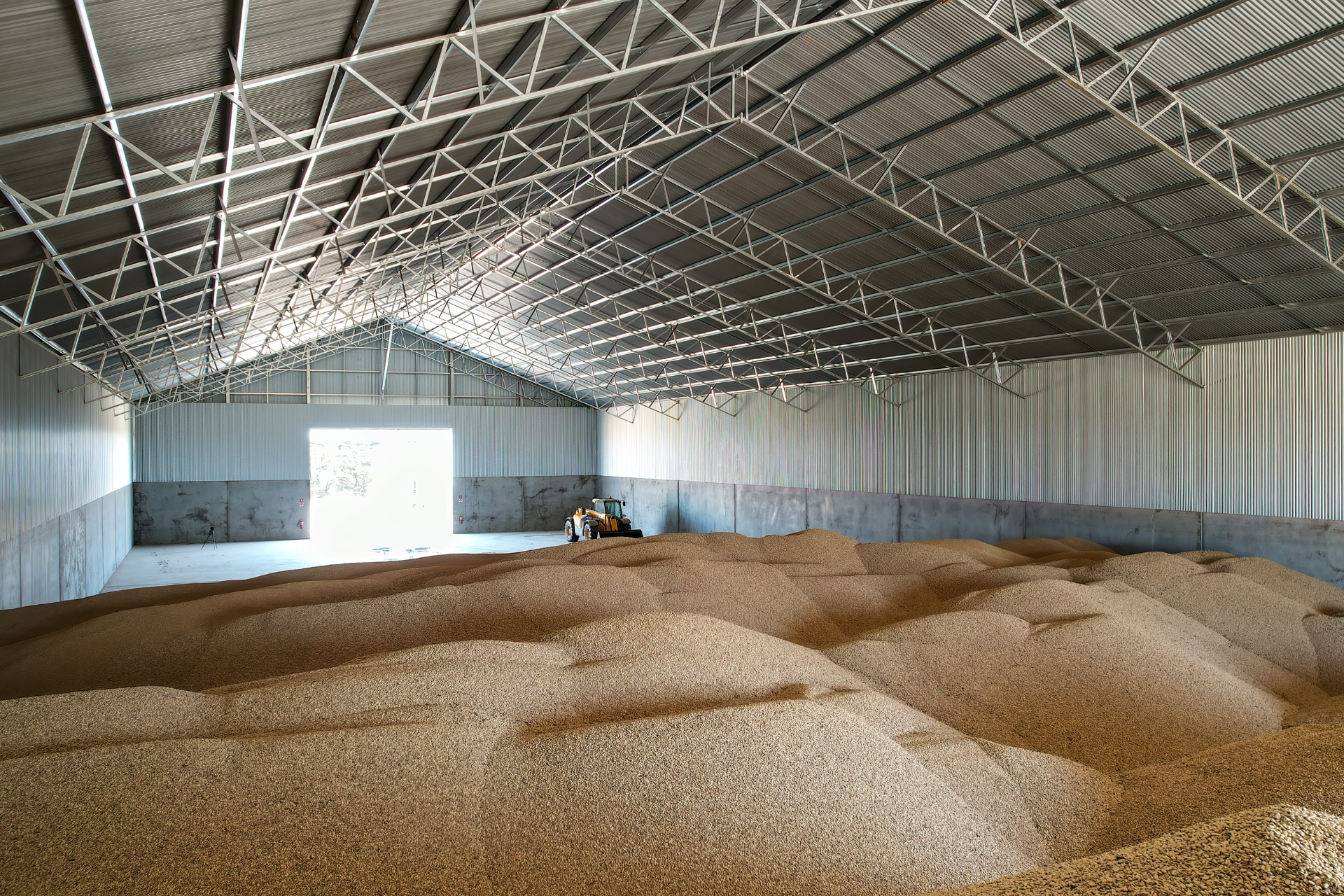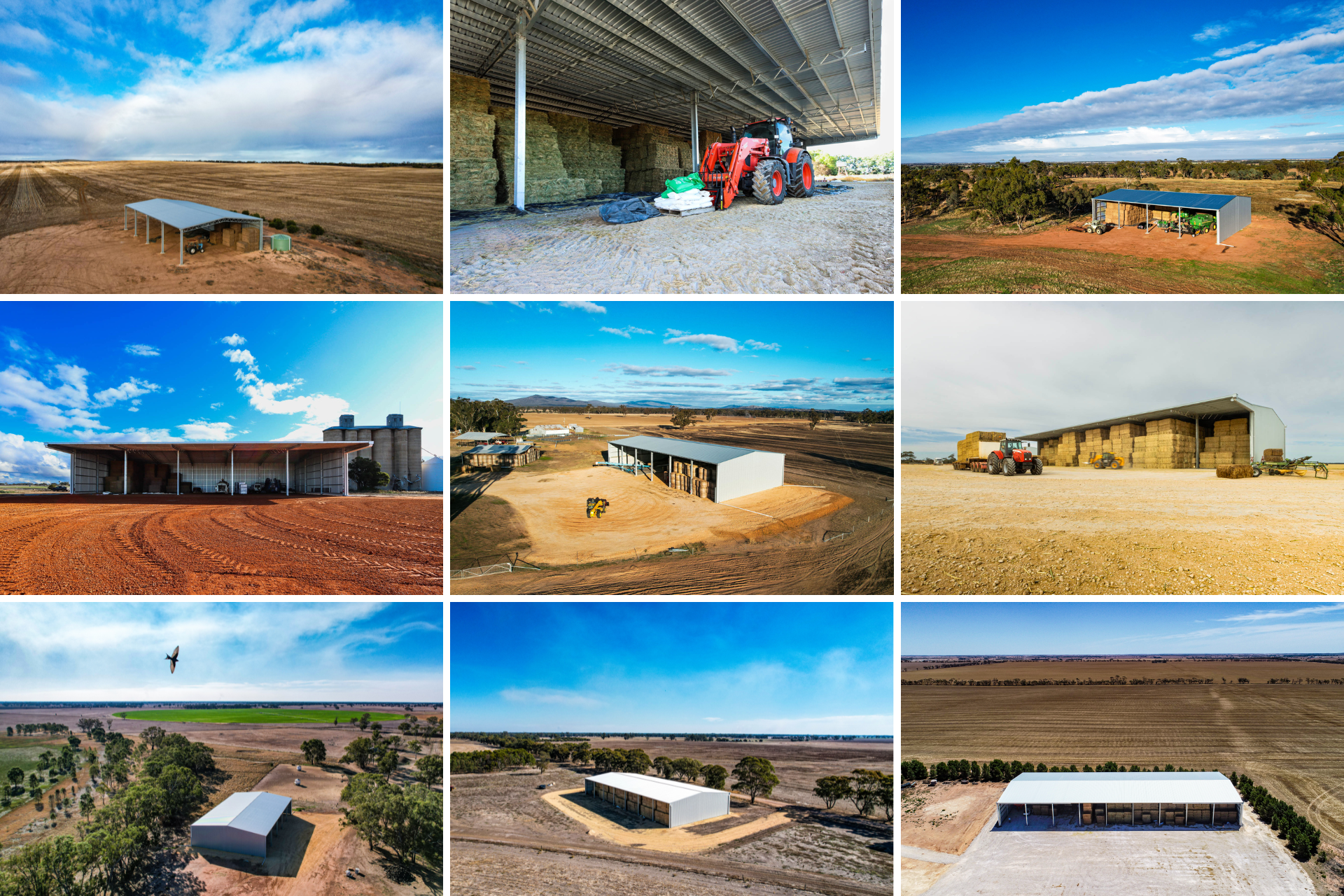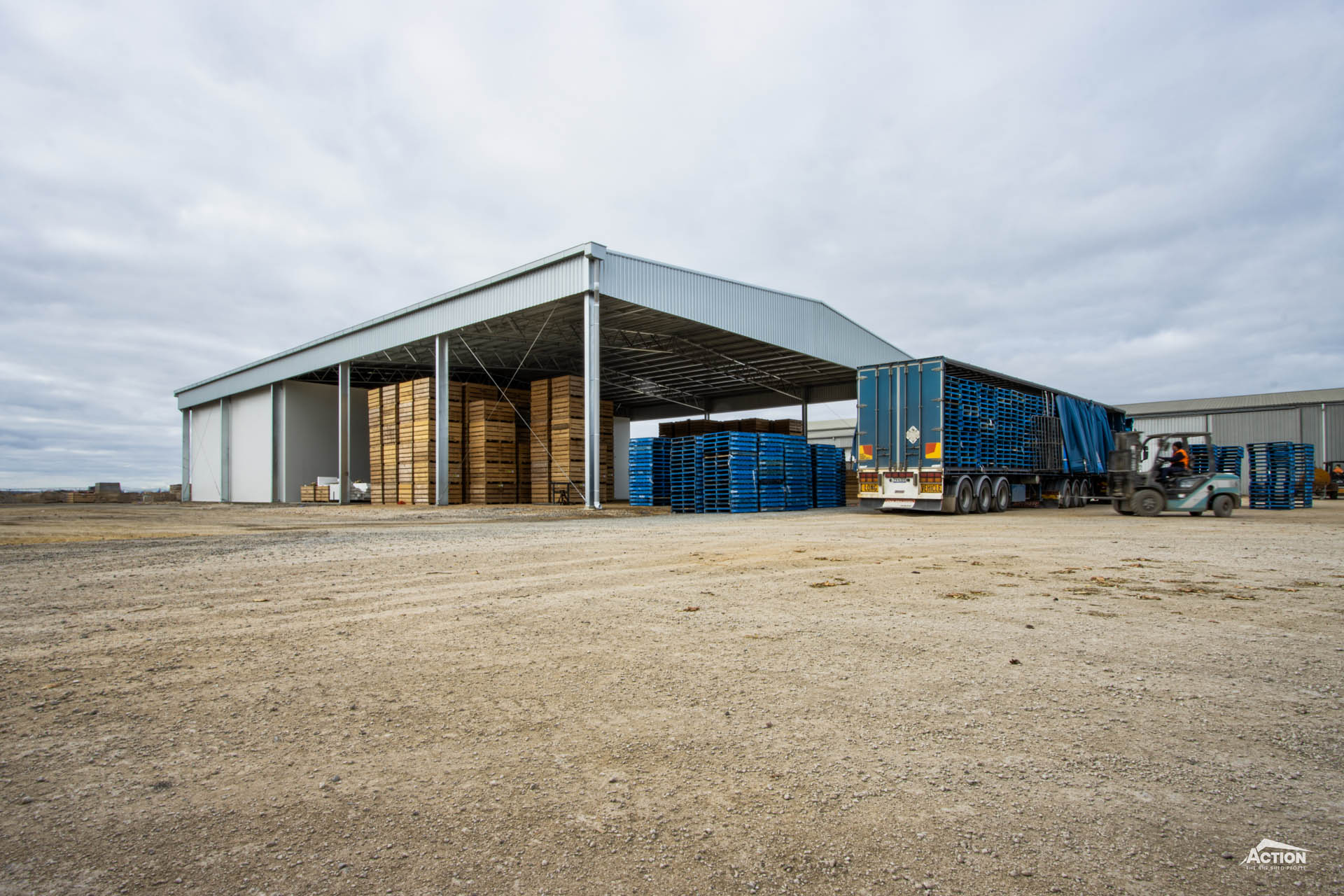Poor hay storage can be frustrating, unsafe and expensive. Hay storage issues like lack of ventilation and airflow, not enough storage capacity, spontaneous combustion and under insured hay are inconvenient and costly.
In this article we discuss some of the common hay storage issues and what you can do to fix them.
Shed damaged during loading and unloading
In high turnover sheds or if staff are inexperienced, back wall sheets can be damaged during loading and unloading.
If this is an issue in your hay shed, hay bumps can be installed to protect the rear wall.
Similarly, when downpipes are placed down the face of the shed columns there is a risk that these will be bumped and broken by loaders and telehandlers. The Action Custom Gutter System is designed so that the downpipes are plumbed to one end, to help eliminate damaged pipes. Talk to a building consultant about the gutter system and set up for your hay shed
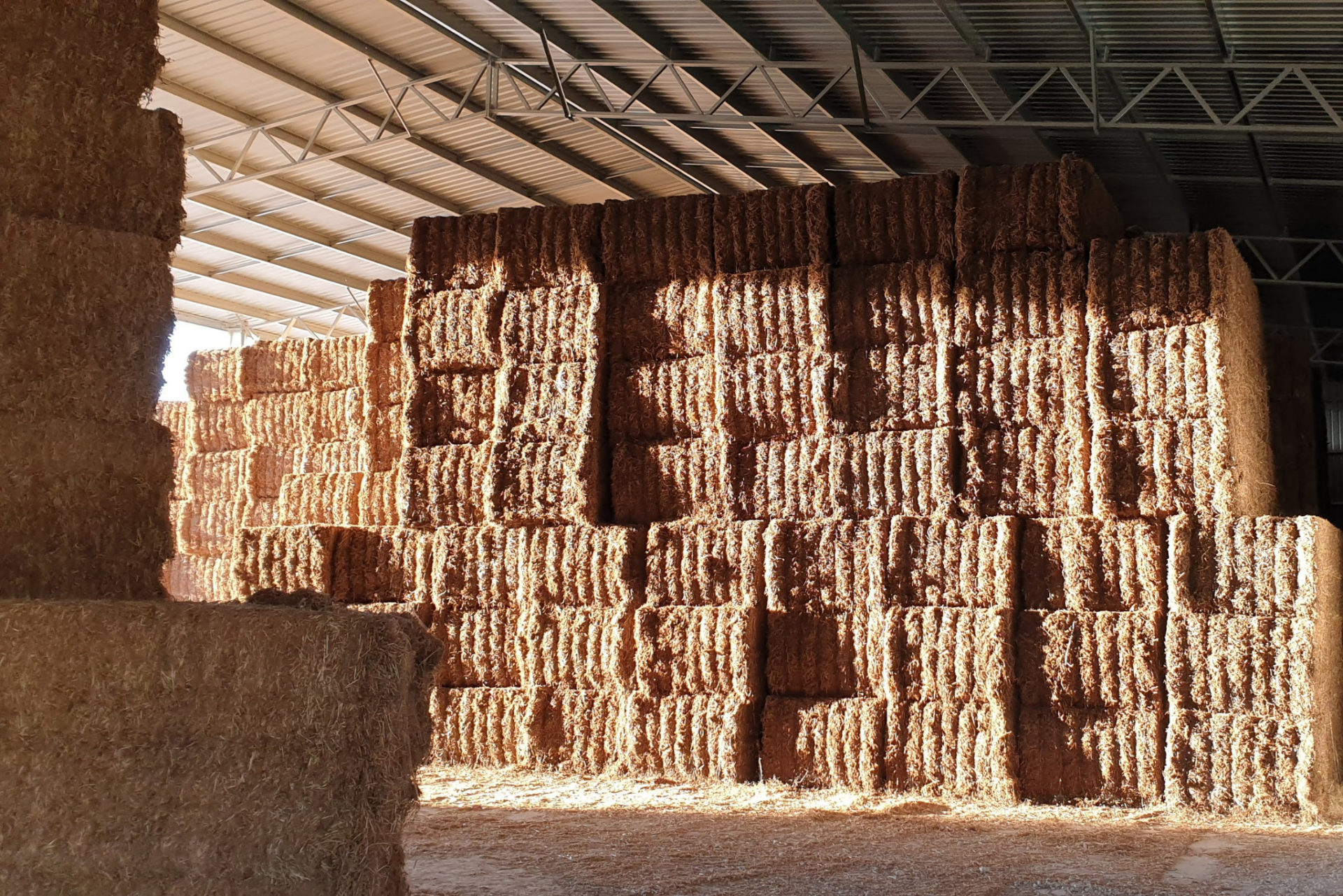
Limited access to the hay
A poorly designed hay shed can make it hard to access or test your hay quickly and safely. Bay spacing and the addition of sliding doors can all make a difference to how easily your hay can be loaded, unloaded or tested with a moisture probe.
While 8 metre bay spacings are the most common for hay sheds, there has been a trend towards bigger bays. This extra space between each stack of hay makes it even easier to access and assess the bales, remove any risky bales and allows you to provide buyers with accurate information. Bigger bay spacings also provide good ventilation and airflow around the bales reducing the risk of spontaneous combustion.
Sliding doors installed on the end or back walls of a three-sided open front hay shed help improve access to the shed and make it a versatile investment.
Mice plague
Sheds can become infested with mice for several reasons such as excess loose hay in and around the shed or wet and cold weather that forces them into the haystacks. While there may be little you can do to combat a mouse plague, you can help limit the numbers of mice and other pests.
Read our article; How Do I Keep Mice Out Of My Shed?
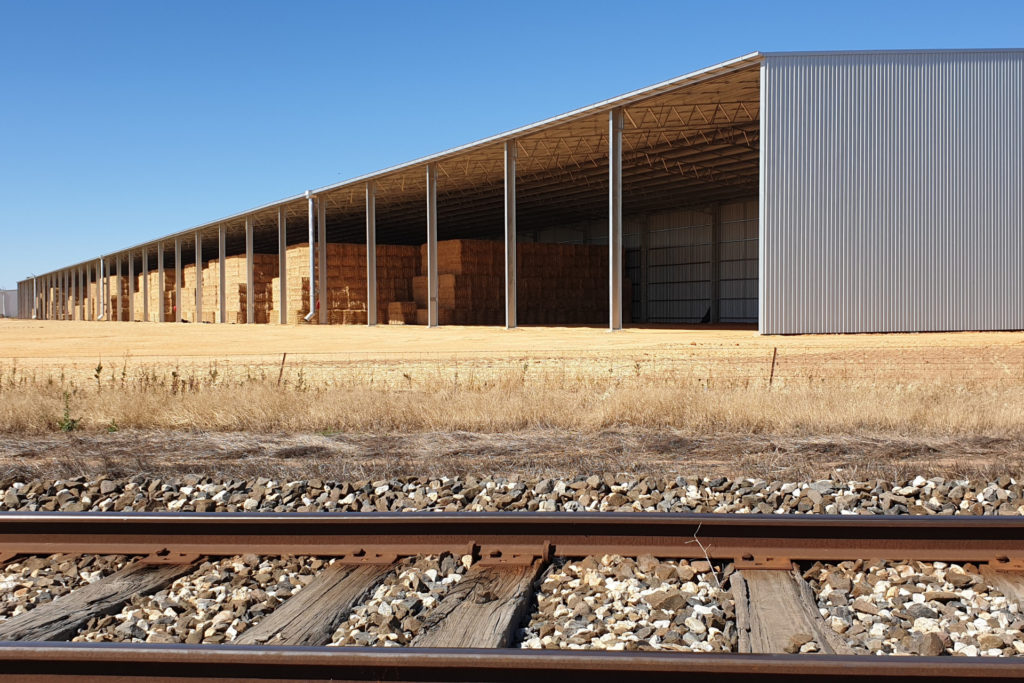
Not enough storage capacity
A hay shed is never too big! One of the most common frustrations when storing hay is not having enough room to store all your bales.
Choosing the right size and height for your hay shed and planning for your future storage requirements, helps avoid this frustration.
Common sheds sizes and capacity:
- 32m(L) x 18m(W) x 6m(H). Stores approx. 1,008 bales
- 40m(L) x 15m(W) x 6m(H). Stores approx.1080 bales
- 48m(L) x 24m(W) x 6m(H). Stores approx. 2050 bales
- 40m(L) x 24m(W) x 7.5m(H). Stores approx. 2250 bales
- 40m(L) x 27m(W) x 7.5m(H). Stores approx. 2520 bales
- 56m(L) x 27m(W) x 7.5m(H). Stores approx. 3520 bales
- 64m(L) x 24m(W) x 7.5m(H). Stores approx. 3650 bales
- 72m(L) x 27m(L) x 7.5m(H). Stores approx. 4540 bales
- 80m(L) x 24m(W) x 7.5m(H). Stores approx. 4560 bales
Use our hay storage calculator to work out what size shed you will need store your hay bales.
One way to plan for your future hay storage requirments is to allow for an extension or addition of a canopy in the future. Talk to the team at Action about designing your hay shed so that extra bays and/or a canopy can be added in the future.
And, remember that while more bays can be added to your shed in the future, it cannot be made higher. Popular heights for hay sheds include 6.75m (seven bales high) and 7.5m (eight bales high).
Safety risks
Using machinery under powerlines and falling bales are some of the safety risks associated with hay storage. Employees should be educated on clearances and exclusion zones and trained to lower machinery when operating under or near powerlines.
Avoid falling bales by stacking hay in safe stable stacks and use signs in and around the shed to keep safety front-of-mind.
Under insured hay
Regularly review insurance to ensure your hay and hay storage shed is covered.
The team at Action are happy to help you with prompt and accurate costings for insurance purposes. You might also like our article; A Quick Guide To Hay Shed Insurance
Weather damaged hay
Weather damaged hay is low quality and results in other issues like mould, spontaneous combustion and lower sale value. Good hay storage is essential for preventing dry matter loss and ensuring the quality of the hay is maintained.
Here are several suggestions to avoid weather damaged hay:
- Install permanent hay storage. Uncovered hay or semi-permanent hay storage options can undo all your hard work in the growing, cutting and baling stages by failing to protect your hay.
- Choose the right configuration for your hay shed. The three sided, open-front configuration provides the best protection for your hay. However, even a roof-only hay shed protects your hay better than a semi-permanent storage option does – and walls can be added in the future.
- A canopy can provide extra protection for your hay and is useful when loading and unloading.
- The orientation of your shed also determines how well your hay is sheltered from the prevailing weather. We generally recommend that you face your shed east.

